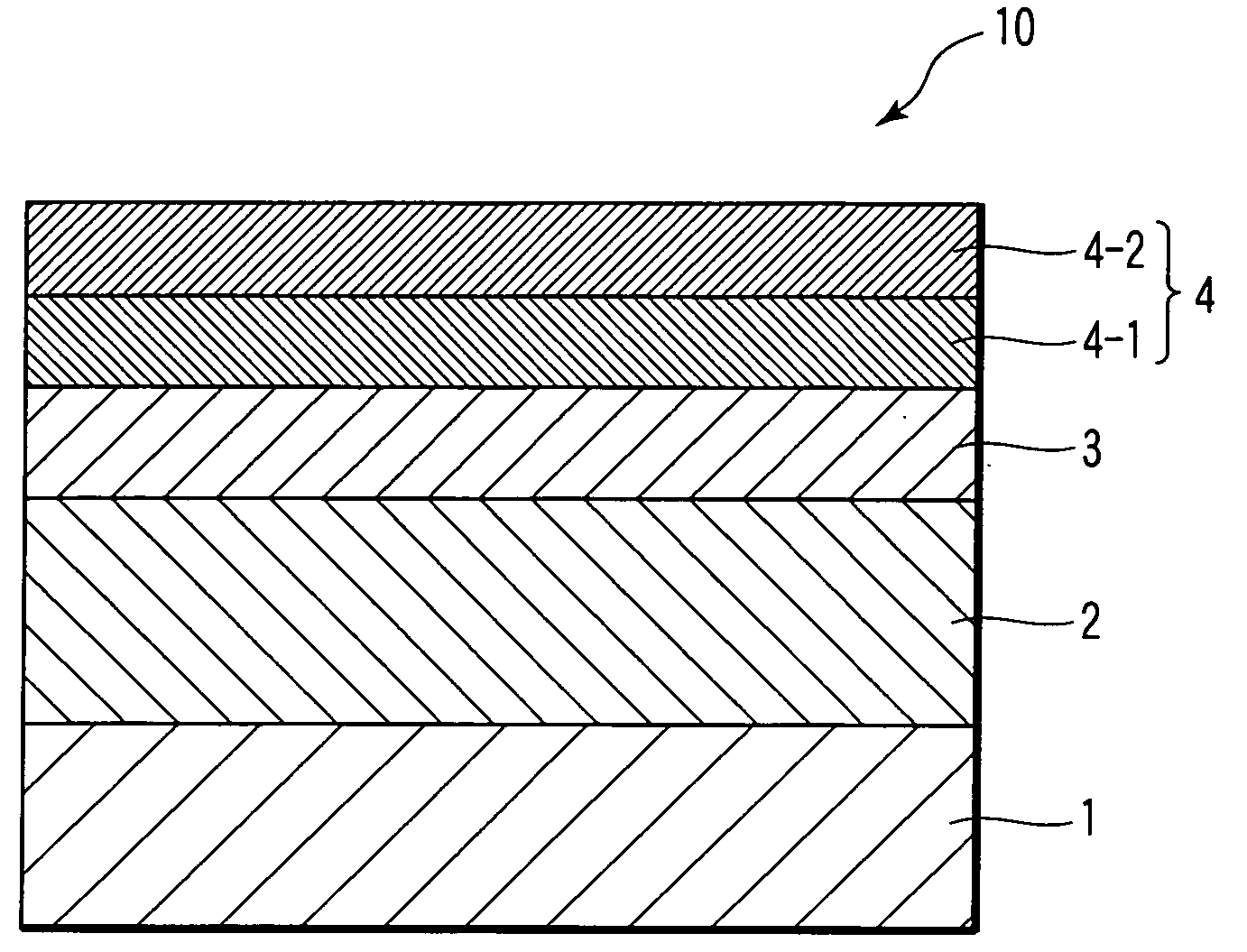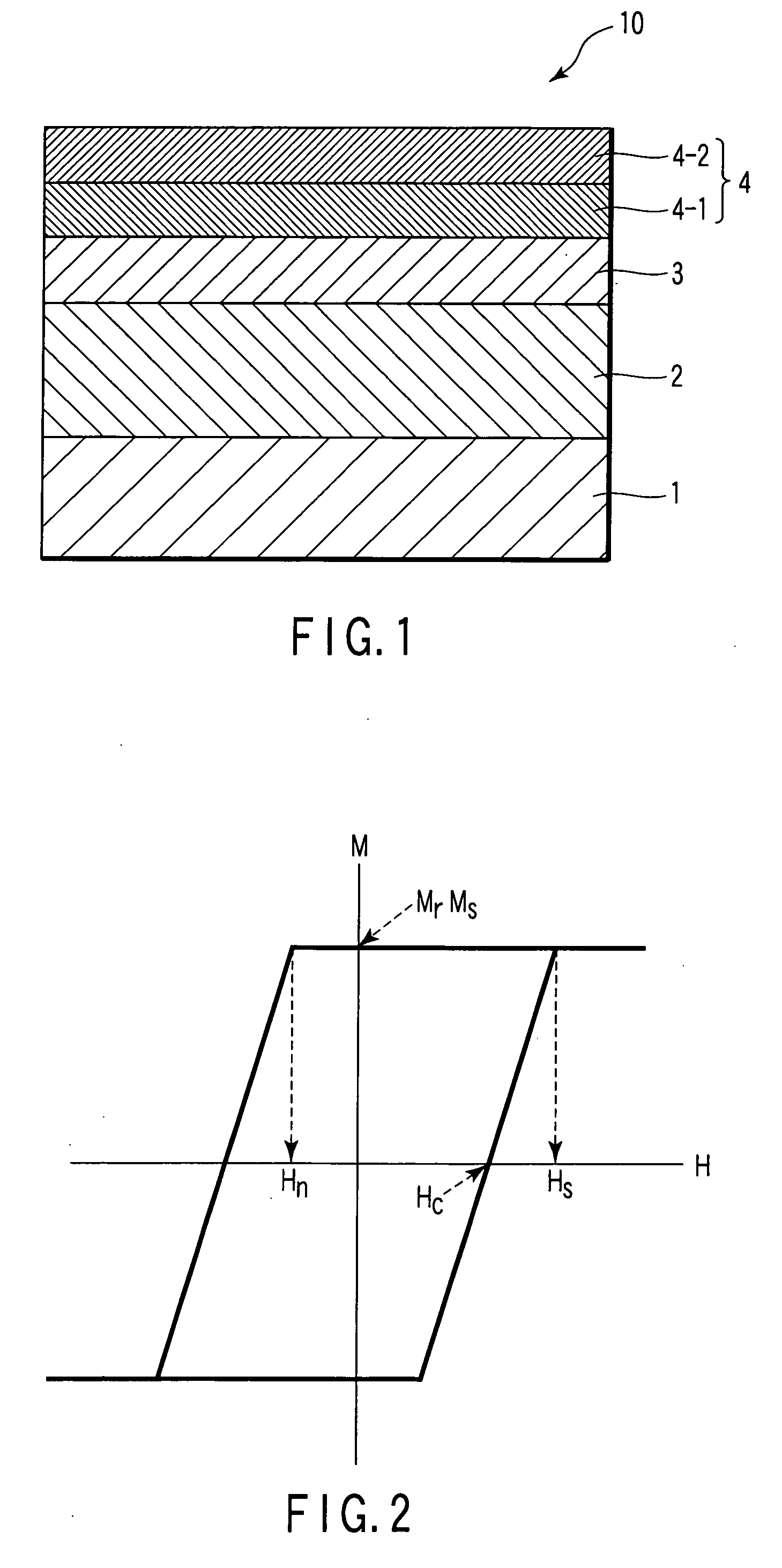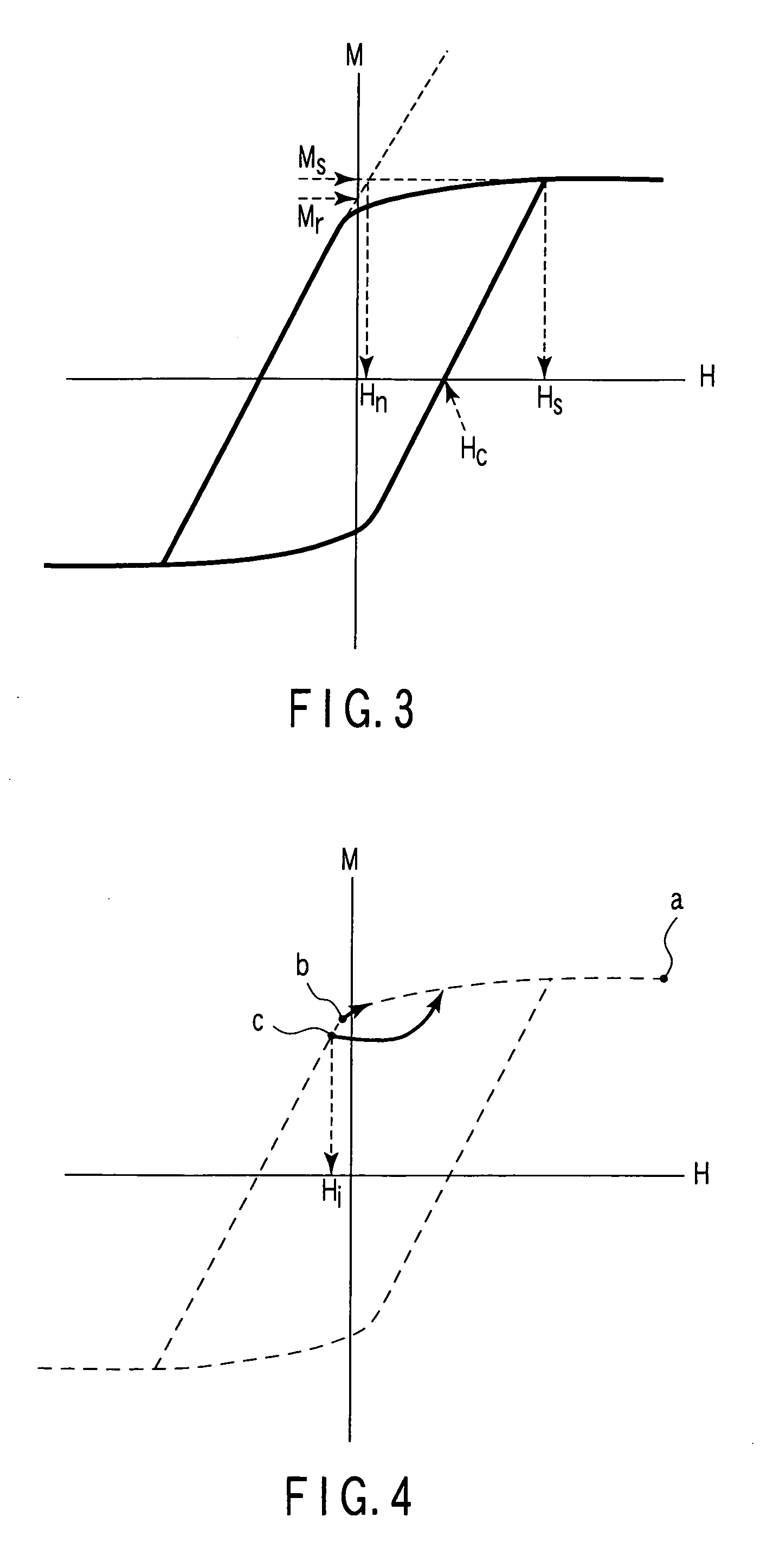Perpendicular magnetic recording medium and magnetic recording/reproducing apparatus
a technology of magnetic recording medium and magnetic recording head, which is applied in the direction of magnetic recording, data recording, instruments, etc., can solve the problems of reducing the writability of the recording head, and affecting the recording quality
- Summary
- Abstract
- Description
- Claims
- Application Information
AI Technical Summary
Benefits of technology
Problems solved by technology
Method used
Image
Examples
example 1
[0094]A 2.5-inch hard disk type nonmagnetic glass substrate (TS-10SX manufactured by OHARA) was placed in a vacuum chamber of the c-3010 sputtering apparatus manufactured by ANELVA.
[0095]After the vacuum chamber of the sputtering apparatus was evacuated to 1×10−5 Pa or less, a 100-nm thick Co90Zr5Nb5 film as a soft magnetic underlayer, a 20-nm thick Ru film as a nonmagnetic underlayer, a 20-nm thick (Co76—Cr6—Pt18)-8 mol % SiO2 film as a hard magnetic recording layer, a Co35Ni65-8 mol % SiO2 film as a soft magnetic recording layer, and a 5-nm thick C film as a protective layer were sequentially formed. The film thickness of the soft magnetic recording layer was changed within the range of 1 to 20 nm. After the film formation, the surface of the protective layer was coated with a 13-Å thick perfluoropolyether (PFPE) lubricant by dipping, thereby obtaining perpendicular magnetic recording media.
[0096]FIG. 7 is a view schematically showing the section of the perpendicular magnetic reco...
example 2
[0133]Perpendicular magnetic recording media were manufactured following the same procedures as in Example 1 except that any of Fe—Ni-8 mol % SiO2, Co—Ni-8 mol % SiO2, and Fe—Co-8 mol % SiO2 was used as a soft magnetic recording layer instead of the 20-nm thick (Co76—Cr6—Pt18)-8 mol % SiO2 film, and the composition ratios of these Fe—Ni, Co—Ni, and Fe—Co alloys were changed. The soft magnetic recording layer film thickness was fixed to 4 nm.
[0134]Each alloy composition was changed by adjusting the target alloy composition.
[0135]The results of the XRD evaluation showed that the magnetic crystal grains in the hard magnetic recording layer of any perpendicular magnetic recording medium had the hcp structure and were orientated in the (0001) plane.
[0136]The results of the planar TEM observation indicated that the hard magnetic recording layer of any perpendicular magnetic recording medium had the granular structure in which the grain boundary region surrounded the magnetic crystal grain...
example 3
[0141]Perpendicular magnetic recording media were manufactured following the same procedures as in Example 1 except that a hard magnetic recording layer was made of (Co76—Cr8—Pt16)-8 mol % TiO or (Co76—Cr8—Pt16)-8 mol % Cr2O3, a soft magnetic recording layer was made of any of Co50—Ni50-8 mol % TiO, Co50Ni50-8 mol % Cr2O3, Co50Ni50-8 mol % Y2O3, Co50Ni50-8 mol % MgO, Co50Ni50-8 mol % Al2O3, and Co50Ni50-8 mol % Ta2O5, and the soft magnetic recording layer film thickness was fixed to 4 nm.
[0142]The layers made of (Co76—Cr8—Pt16)-8 mol % TiO, (Co76—Cr8—Pt16)-8 mol % Cr2O3, Co50—Ni50-8 mol % TiO, Co50Ni50-8 mol % Cr2O3, Co50Ni50-8 mol % Y2O3, Co50Ni50-8 mol % MgO, Co50Ni50-8 mol % Al2O3, and Co50Ni50-8 mol % Ta2O5 were respectively formed by using targets made of (Co76—Cr8—Pt16)-8 mol % TiO, (Co76—Cr8—Pt16)-8 mol % Cr2O3, Co50—Ni50-8 mol % TiO, Co50Ni50-8 mol % Cr2O3, Co50Ni50-8 mol % Y2O3, Co50Ni50-8 mol % MgO, Co50Ni50-8 mol % Al2O3, and Co50Ni50-8 mol % Ta2O5 each having a diameter ...
PUM
 Login to View More
Login to View More Abstract
Description
Claims
Application Information
 Login to View More
Login to View More - R&D
- Intellectual Property
- Life Sciences
- Materials
- Tech Scout
- Unparalleled Data Quality
- Higher Quality Content
- 60% Fewer Hallucinations
Browse by: Latest US Patents, China's latest patents, Technical Efficacy Thesaurus, Application Domain, Technology Topic, Popular Technical Reports.
© 2025 PatSnap. All rights reserved.Legal|Privacy policy|Modern Slavery Act Transparency Statement|Sitemap|About US| Contact US: help@patsnap.com



